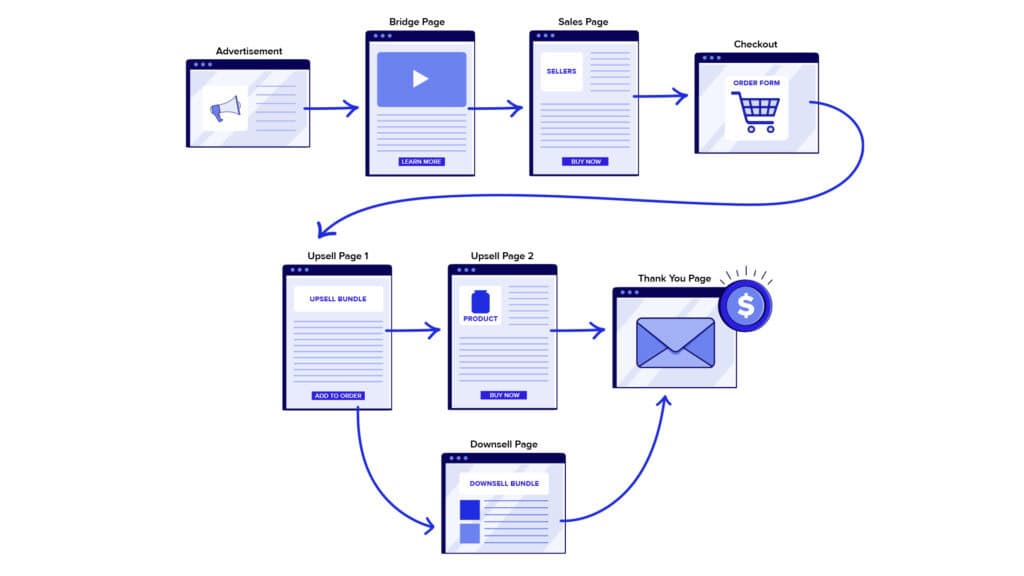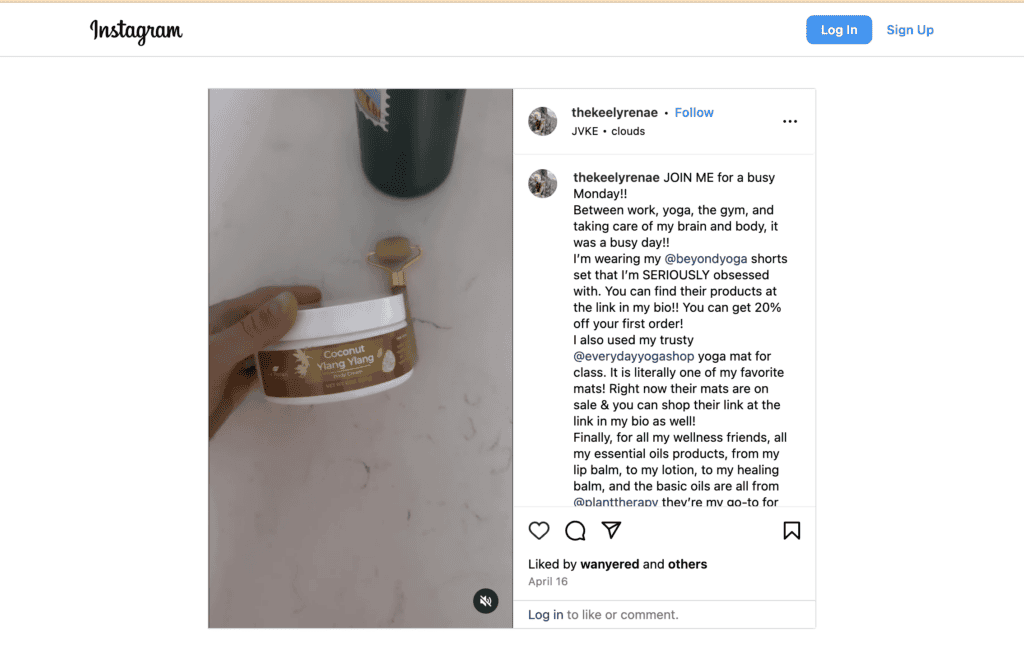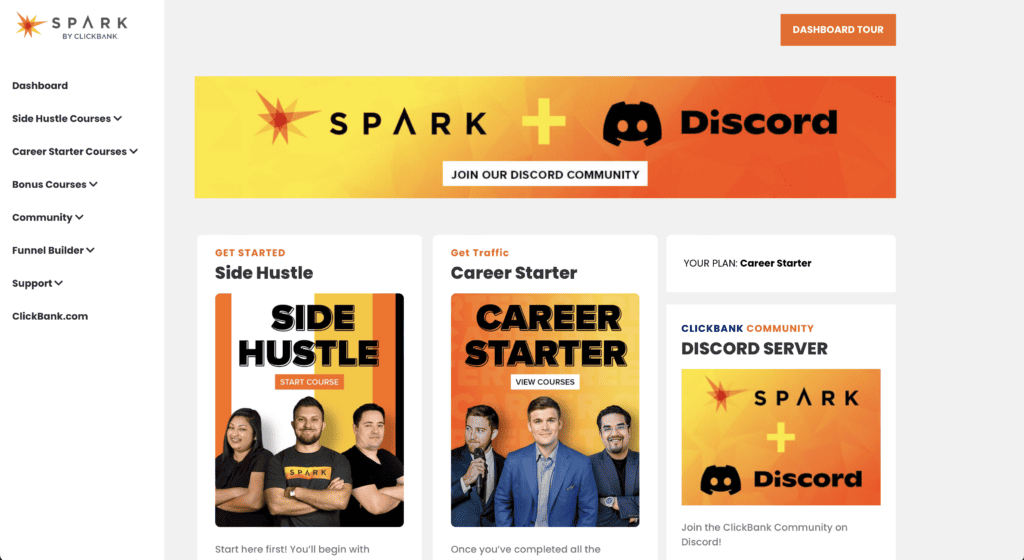Is Affiliate Marketing Passive Income? [Here’s the Truth!]

As you’ve probably heard before, affiliate marketing is a business model where you promote products through your own special tracking link and refer customers to make a purchase – in exchange for a commission ($$$) on each sale!
As an affiliate, you can share your tracking link across many different traffic sources, including paid ads or with your own organic audience. Affiliate marketing is a GREAT way for anyone with marketing chops to earn income through their skills!
There’s a real allure in income stream opportunities from affiliate marketing. But here’s the ultimate question we always hear from new affiliates (and the one you’re probably asking as well):
“Is affiliate marketing passive income?”
In this guide, we’ll answer that question and help you figure out what affiliate path is best for you!
Join more than 117,000 affiliate marketers!
Get expert affiliate marketing insights delivered right to your inbox. Plus, subscribe now for a step-by-step guide to getting started on ClickBank!
How Affiliate Marketing Works
When you become an affiliate, you can find products to promote that you don’t need to brainstorm, create, sell, or fulfill yourself. Your ONLY job is to generate a tracking link and convince others to purchase products after clicking through your link!
Sometimes, you’ll place these links right in your content, and other times, you’ll add them to a bridge page between the original touch point and the sales page. Either way, your affiliate links are unique, so you get credit each time a visitor follows through and buys after clicking that link!
For some people, just getting your links out there somewhere online can lead to a decent income. Others build an affiliate marketing income by working hard on sophisticated funnels or campaigns that incorporate Facebook or YouTube Ads, email automations, multiple landing pages, and so on.
Each affiliate has their own style and a method that works best for them. It’s important to remember that affiliate marketing is NOT a one-size-fits-all business model or community!
NOTE: If you’re new to affiliate marketing and want to brush up on the topic, be sure to check out our Affiliate Marketing 101 guide!
What is Passive Income?
So, we know what affiliate marketing is. But if we want to answer whether affiliate marketing = passive income, we should briefly define passive income, right?
Well, passive income is basically when money makes more of itself and you earn it automatically over time. The two most important aspects of passive income are:
Ultimately, the question of whether you can make passive income as an affiliate depends pretty heavily on how YOU think of passive income.
There are a few ways that affiliate marketing can qualify as “recurring revenue.” With that said, your best results will still tend to come from an active strategy to spread the word about your chosen products and get more traffic and conversions through your tracking link.
4 Ways to Make Passive Income With Affiliate Marketing
If you’re wondering whether affiliate marketing is passive income, the answer is “sometimes.”
Based on what we’ve seen here at ClickBank, there are three types of affiliate marketing that are likely to become ongoing income streams:
- Rebilling sales
- Automated funnels
- Content channels
In the end, the more your campaign is able to “run itself,” the more passive your income from affiliate links can become!
Now, let’s take a look at each option.
Option 1: Rebill Revenue
The first option is revenue from rebill conversions. Let me briefly explain the jargon here.
Affiliates are paid for each initial conversion, which in ClickBank’s world refers specifically to a product purchase by the end customer. However, if a consumer buys a product with some kind of subscription component – such as a supplement delivered at regular intervals or a software as a service (SaaS) product – then each time they are billed for that product, you earn another conversion and make more money! This is known as “rebill” revenue.
Rebill revenue comes from products that generate more money over time. Again, software products are often paid monthly or annually with a subscription. In contrast, monthly products like bundles of supplements automatically charge the customer throughout the year – and for as long as they choose to maintain the subscription.
Promoting subscription products makes it possible for you to get recurring revenue every month from customers you’ve already brought to the product owner or brand.
Rebill Revenue Example:
You partner with a natural supplements brand that sells subscription boxes. You effectively market to a health-conscious audience who invest in regular personalized orders of healthy, natural supplements. They follow your affiliate link to sign up for yearly, two-year, five-year, and indefinite subscriptions. Their original purchase order is still linked to your affiliate account as one of your referred customer conversions.
Each time one of those subscriptions is rebilled for the next monthly (or quarterly) shipment, you get another commission from the supplement brand as if you earned them another purchase. As long as your referred clients stay subscribed, rebilled revenue can become a form of recurring revenue through affiliate marketing.
Option 2: Automated Funnels
An automated funnel is like a sales pitch that keeps on selling 24/7/365. Once you set it up, it can theoretically continue to generate sales “on autopilot” for as long as the product is available and there’s an audience interested in buying it!


A funnel is a journey that potential customers follow from initial touch point all the way to conversion (i.e. a purchase). For example, you might have a great piece of long-form content, like a pre-recorded webinars or high-ranking blog article, that automatically attract new audience members over time. If you use these assets to seed your automated funnel using an auto-responder email sequence, then you can keep earning clicks, conversions, and income with almost no effort on your part!
A good funnel can last you from a few months up to a year before you need to freshen up the content and conversion path. This can function as short to medium-term passive income streams, as long as the strategy works.
Obviously, this works best with more evergreen topics. I would say an automated funnel about dating is usually fairly evergreen, because dating doesn’t necessarily change a ton from year to year (except for things like dating apps and ways that people communicate while dating). On the other hand, a funnel focused around a make money online/e-business product will probably be obsolete relatively quickly, because people in that space expect cutting-edge information based on what’s working right now.
Automated Funnel Example:
You publish a series of pre-recorded webinars on camping and survival skills. You set up a landing page that funnels interested viewers to find your webinar and sign up through an automatic email responder that funnels them toward DIY and survival affiliate products. These products are the natural next step for anyone who goes through your webinars, so it makes total sense for you to generate commissions this way.
By choosing a subject people will be consistently interested in (ideally in one of the “Big 3” niches of health, wealth, or relationships) and creating an effective funnel featuring affiliate products, you can have affiliate links that essentially “sell themselves” for quite some time before you need to refresh your landing page or update your content.
The automated funnel can provide a notable source of semi-passive income because you don’t need to monitor the funnel to continue making sales constantly.
Option 3: Content channels
Organic “self-generating” traffic is the true key to passive affiliate conversions online, and that means setting up one or more content channels. A quality blog, YouTube channel, podcast, or niche website that draws in a steady stream of visitors will always convert them into affiliate sales, passively!
I have my own songwriting blog, so I know exactly how this works with a CTA for an affiliate product on my blog posts:


In order to make the content channel more effective, you’ll probably need to incorporate lead magnets and an automated funnel that includes an email nurture campaign.
However, if you attract enough organic traffic and have a decent enough conversion rate on your CTAs, you can run a website or content channel built entirely around an organic audience and earn affiliate revenue whenever they make a purchase.
In this way, affiliate marketing truly becomes passive, and even your older content may gain potential customers as they click through your affiliate tracking links and make a purchase.
Content Channel Example:
Say you start a blog and niche website for people with a particular health condition, like a weak pelvic floor. You build a community with blog posts, social updates, and the occasional video to keep the website growing. On your website, you also have embedded affiliate links to a few helpful health supplements and products that benefit people with this health condition.
With a thriving website featuring helpful blog content and relevant affiliate links, you can continue to earn affiliate sales through the website, even without any other active marketing campaign!
BONUS: Passion Project
For anyone wondering if affiliate marketing is passive income, I think it’s often because you don’t like the work you’re already doing, whatever that may be!


That’s why I like the idea of reframing “passive” to be less about how automatic your earnings are, and more about how much you enjoy what you’re doing. If you’re engaged with a passion project that you would do for free, then any money you make is sort of a bonus!
Fortunately, many up-and-coming affiliates know how to weave affiliate marketing into their favorite hobby or interest, which happens to come with some kind of audience and a chance to earn money. Our own social media manager, Keely, has a lot of advice on how to monetize your audience as a content creator or influencer.
Ultimately, if your affiliate marketing traffic source is something you’re already doing, the idea of “passive” revenue is relative. Simply by integrating some kind of money-making opportunity into your passion project, you can get paid to do what you love. Win-win!
Passion Project Example:
You love cooking and started doing a regular cooking vlog several years ago. It’s something you really enjoy, and you’ve built a community of people who watch your videos and appreciate your product recommendations. As an affiliate marketer, you may have a few sponsored products that you personally use and enjoy. By sharing these links in the video and description, your audience clicks through!
While you are still doing regular cooking videos, it’s something you love to do and would be doing anyway. It doesn’t feel like work, and the income you make from affiliate links effectively becomes recurring revenue because you’re not doing anything extra to sell the products you wouldn’t already be doing for fun!
Separating Time and Effort: Is “Passive Income” the Real Goal?
I want to close this discussion by parsing the real idea behind passive income. Is that REALLY what you want?
While so many online business owners dream of recurring or passive revenue, I challenge you to define what your actual goal is!
Recurring revenue is nice, but what you may find most satisfying is simply separating your earning potential from the time you spend working. Here’s what I mean:
When you create a blog post or video as an employee for someone else, you might get paid $20 or $30 per hour for that work (or possibly a flat rate for the work you deliver, such as $100). No matter how good the work is or how much value it produces, you’re only paid that pre-determined amount.
But imagine if you use affiliate marketing to make money from that same effort. Now, if your blog or video manages to produce a single affiliate sale, you could make $50, $100, or even $150. But what if it produces two affiliate sales, or ten? And if you tie that content piece to an automated funnel where you can capture that same lead and get them interested in additional affiliate products, your earnings potential is massive from something that took you maybe 5 hours or less to put together!
It’s definitely possible to build an affiliate business where your earnings aren’t directly tied to the amount of time you work (which is a really good thing!). With the right strategy, you can even plan to reduce your total work hours while increasing your sales and making more money overall!
In effect, you can finally stop working for hourly pay and start earning consistently over time, even if you only focus on your marketing efforts for a few hours or days a week. Making money independent of time can feel incredible, and honestly, it’s a whole lot like “passive” revenue. This is especially true if you actually enjoy the work involved in your affiliate business, whether that’s writing content, managing paid ads, or setting up email campaigns!
Getting Started in Affiliate Marketing
Real talk: If you’re considering affiliate marketing as a way to increase your income, explore the potential for making money online, and maybe even start earning passive income, you should know that it’s possible – but it’s not easy!
However, it IS easy to get started and see where this affiliate journey takes you! Here at ClickBank, we have several resources that can quickly help you begin your journey.
First of all, our ClickBank for Beginners resource is a great place to start for free if you’re diving into affiliate marketing on ClickBank for the first time. You should also look at Spark by ClickBank, the affiliate affiliate marketing education program from ClickBank that features both free traffic and paid traffic courses to teach you different strategies for making recurring revenue.


Earning through affiliate marketing can take any form you choose, whether your goal is a massive income or just a fulfilling side hustle. But if you want to achieve that mythical goal of passive income, the most important thing you can do today is simply get started!
Good luck!



